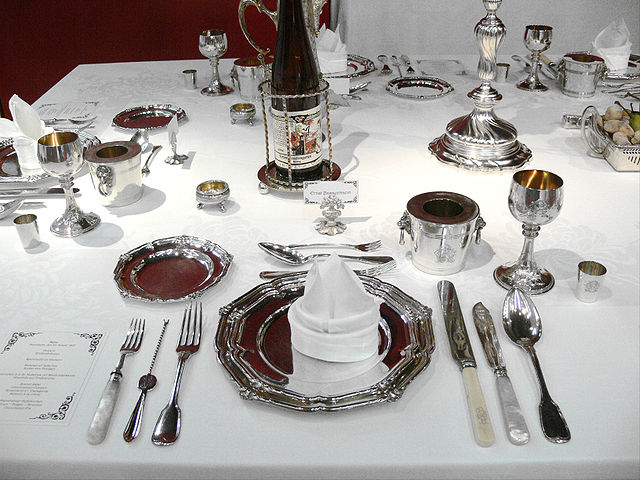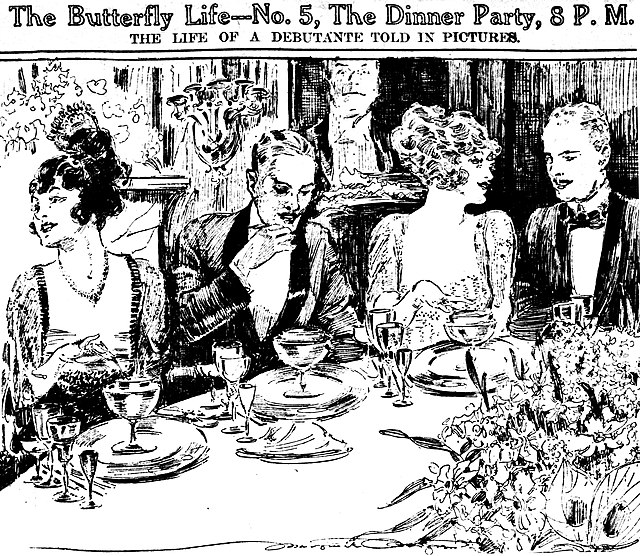Table setting or place setting refers to the way to set a table with tableware—such as eating utensils and for serving and eating. The arrangement for a single diner is called a place setting. It is also the layout in which the utensils and ornaments are positioned. The practice of dictating the precise arrangement of tableware has varied across cultures and historical periods.
A table setting may have many elements, especially formal ones; the long utensil on the left side is a lobster pick.
Informal setting with pancakes in a California mountain cabin
Place settings are conspicuous in this 1920 sketch by reporter-artist Marguerite Martyn of the St. Louis Post-Dispatch.
Formal place setting for 8-course dinner
Tableware items are the dishware and utensils used for setting a table, serving food, and dining. The term includes cutlery, glassware, serving dishes, serving utensils, and other items used for practical as well as decorative purposes. The quality, nature, variety and number of objects varies according to culture, religion, number of diners, cuisine and occasion. For example, Middle Eastern, Indian or Polynesian food culture and cuisine sometimes limits tableware to serving dishes, using bread or leaves as individual plates, and not infrequently without use of cutlery. Special occasions are usually reflected in higher quality tableware.
Formal dining table laid for a large private dinner party at Chatsworth House
Table laid for six at the Royal Castle, Warsaw, (18th–19th century fashion)
Historic pewter, faience and glass tableware
Food served on a banana leaf in Karnataka, India








